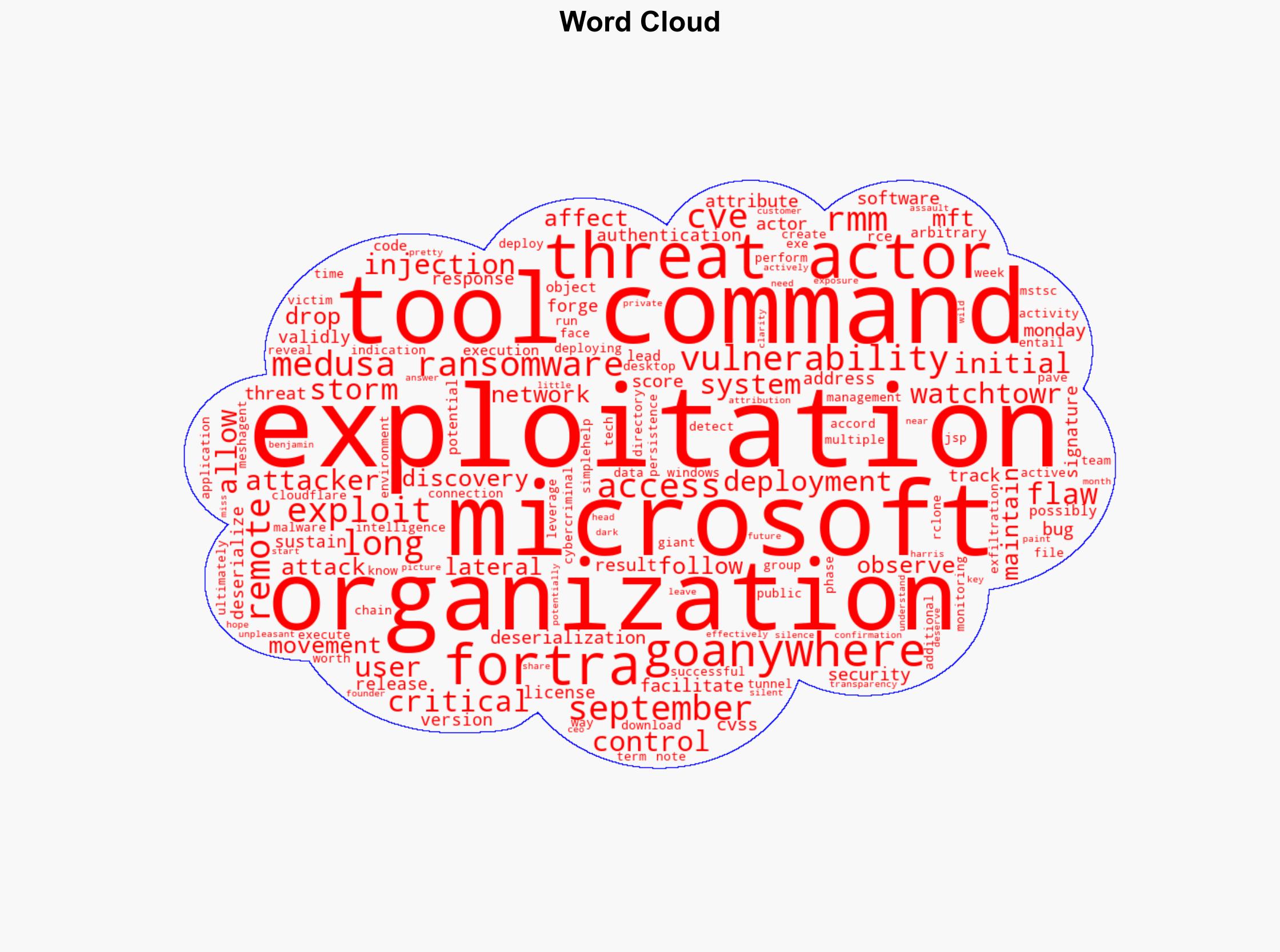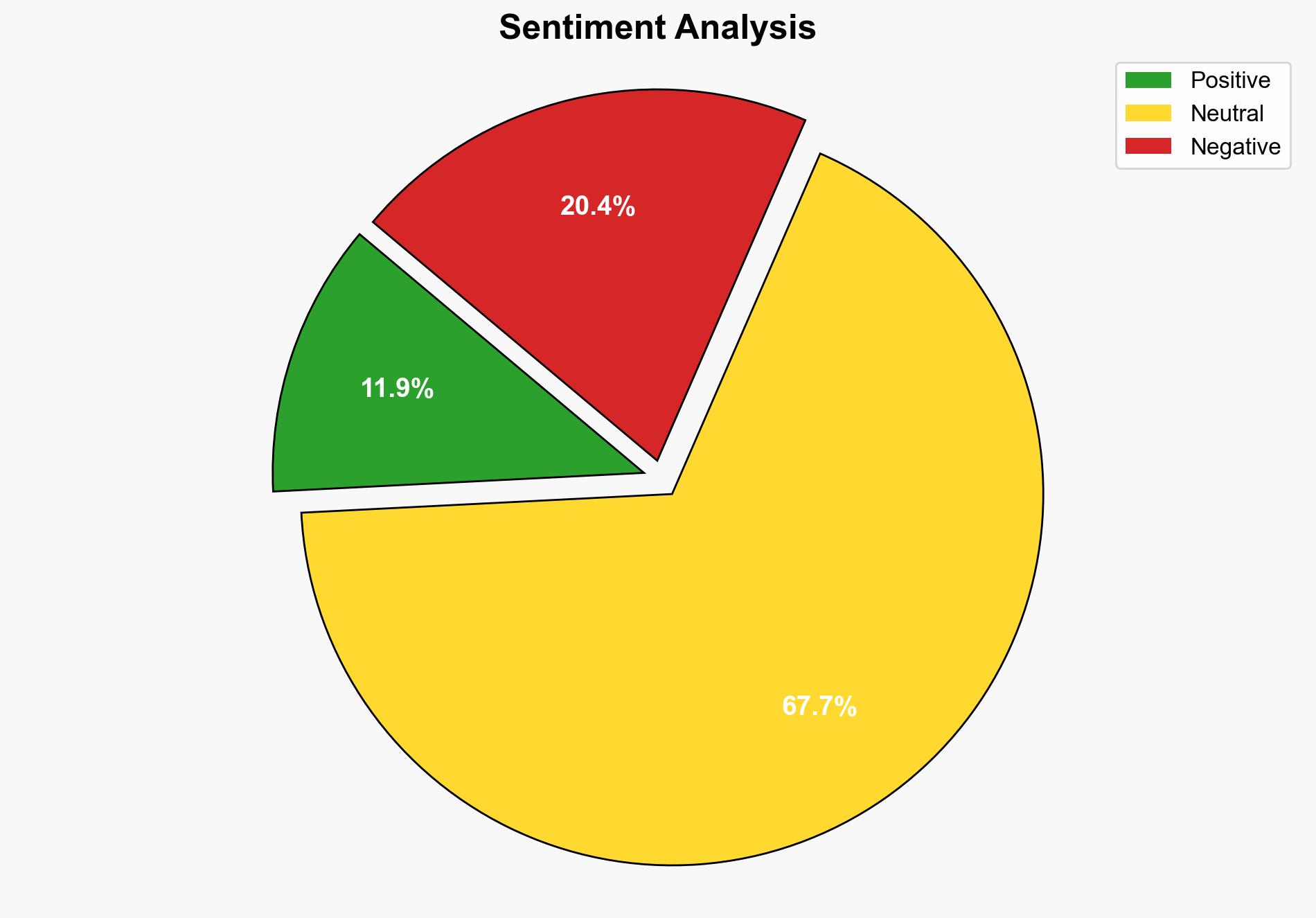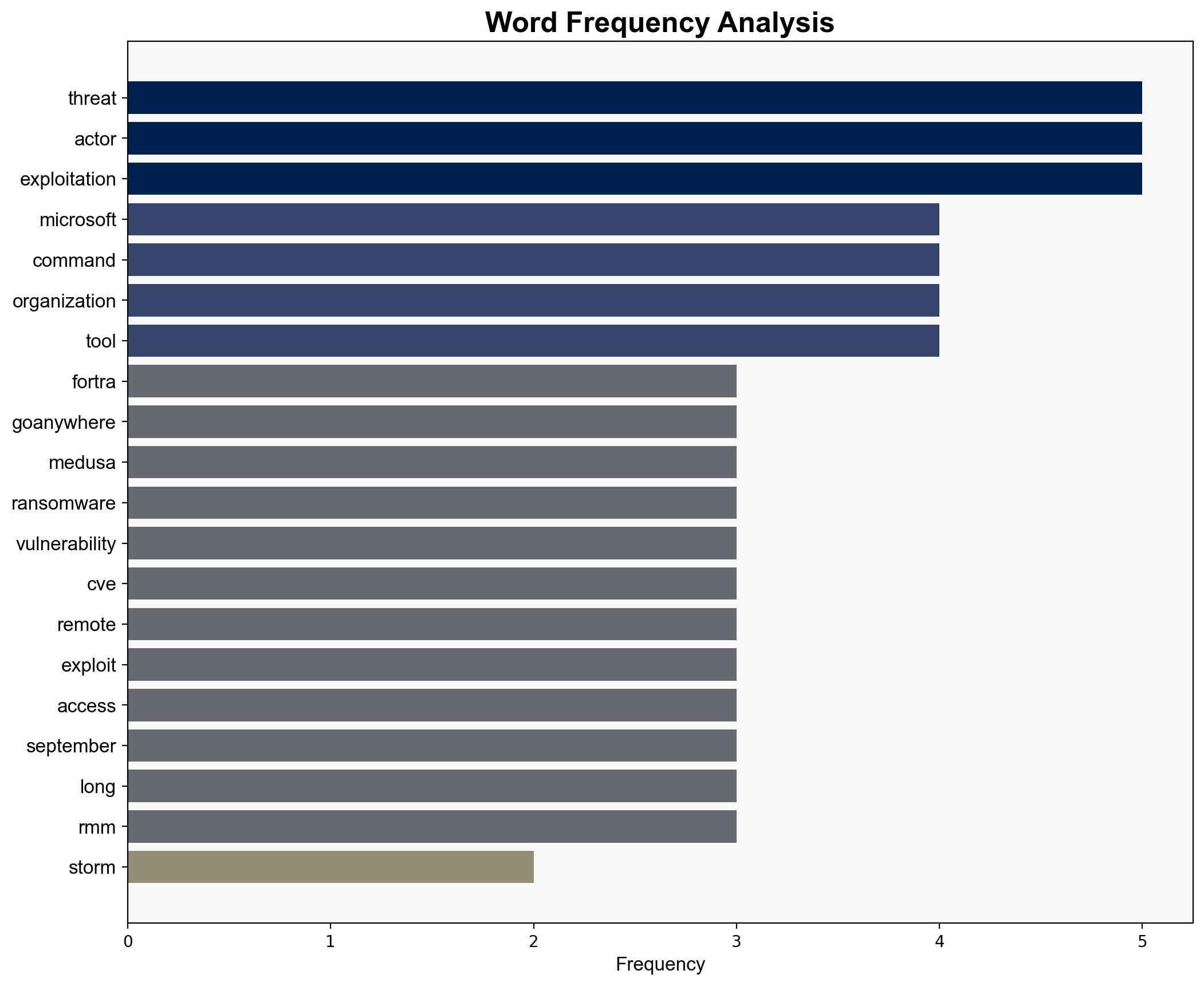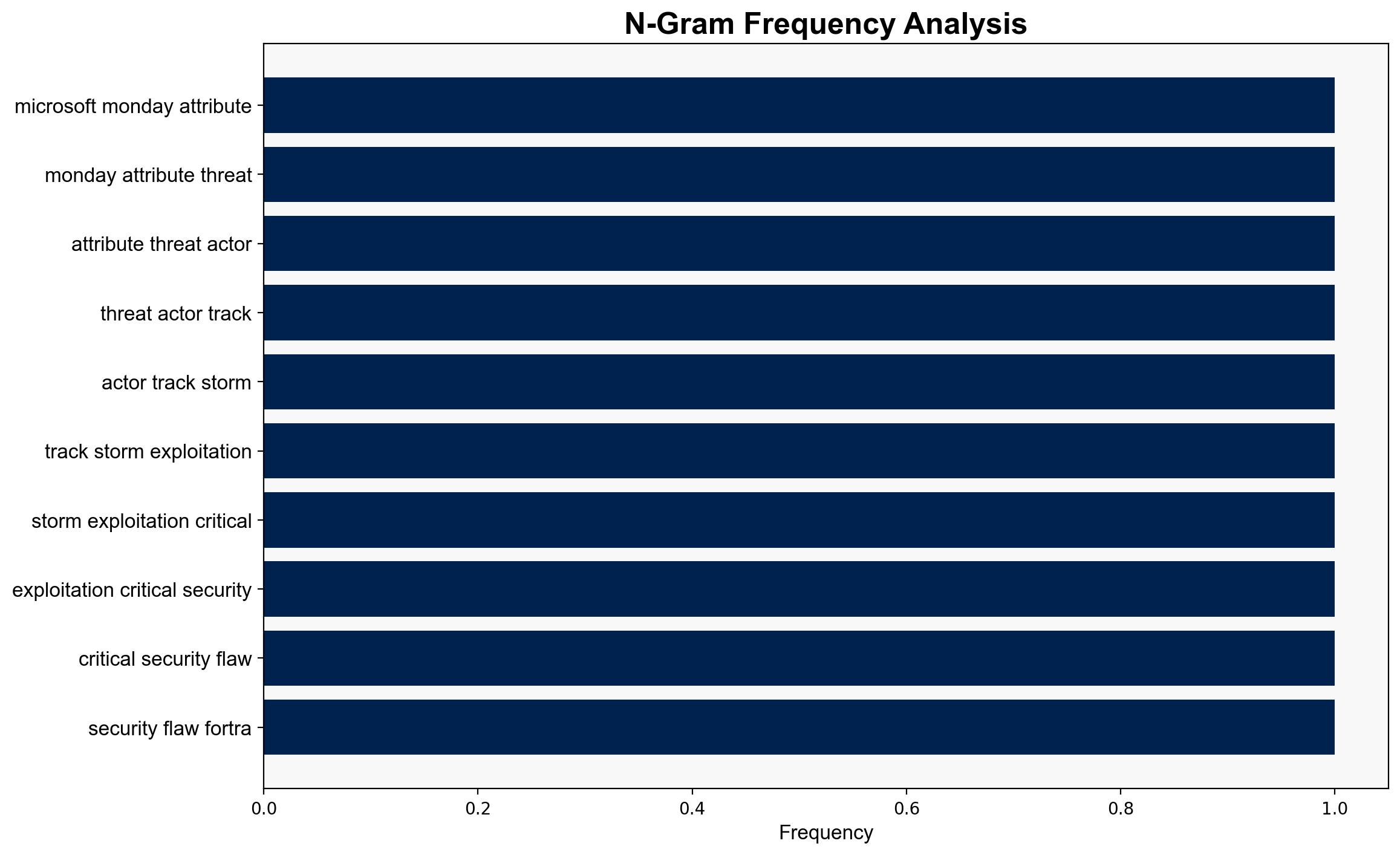Microsoft Links Storm-1175 to GoAnywhere Exploit Deploying Medusa Ransomware – Internet
Published on: 2025-10-07
Intelligence Report: Microsoft Links Storm-1175 to GoAnywhere Exploit Deploying Medusa Ransomware – Internet
1. BLUF (Bottom Line Up Front)
The most supported hypothesis is that Storm-1175, a cybercriminal group, is exploiting a critical vulnerability in Fortra’s GoAnywhere software to deploy Medusa ransomware. This exploitation involves sophisticated techniques for persistence and lateral movement within networks. Confidence level: Moderate. Recommended action: Organizations using GoAnywhere should immediately apply patches, enhance monitoring for suspicious activity, and prepare for potential ransomware incidents.
2. Competing Hypotheses
Hypothesis 1: Storm-1175 is actively exploiting the GoAnywhere vulnerability to deploy Medusa ransomware, leveraging sophisticated techniques for persistence and lateral movement.
Hypothesis 2: The attribution to Storm-1175 is incorrect, and another threat actor is exploiting the vulnerability, possibly using Medusa ransomware as a false flag to mislead investigators.
Using the Analysis of Competing Hypotheses (ACH) method, Hypothesis 1 is better supported due to Microsoft’s direct attribution and observed patterns of exploitation consistent with known Storm-1175 tactics.
3. Key Assumptions and Red Flags
Assumptions include the accuracy of Microsoft’s threat intelligence and the reliability of observed exploitation patterns. A red flag is the lack of transparency from Fortra regarding the vulnerability, which could indicate either a lack of information or an attempt to control the narrative. The possibility of a false flag operation by another actor remains a blind spot.
4. Implications and Strategic Risks
The exploitation of this vulnerability poses significant risks to organizations using GoAnywhere, potentially leading to widespread ransomware incidents. This could result in economic losses, damage to reputation, and operational disruptions. If the attribution is incorrect, it may lead to misallocation of resources and failure to address the actual threat actor.
5. Recommendations and Outlook
- Immediate Actions: Apply all available patches for GoAnywhere software. Increase network monitoring and conduct security audits to identify potential breaches.
- Scenario Projections:
- Best Case: Vulnerability is patched, and no further incidents occur.
- Worst Case: Widespread ransomware attacks lead to significant operational and financial damage.
- Most Likely: Continued attempts to exploit the vulnerability with varying degrees of success.
6. Key Individuals and Entities
Benjamin Harris (WatchTowr CEO and Founder) is mentioned in the context of revealing active exploitation of the vulnerability. Microsoft’s Threat Intelligence Team is a key entity in attributing the attacks to Storm-1175.
7. Thematic Tags
national security threats, cybersecurity, counter-terrorism, regional focus




